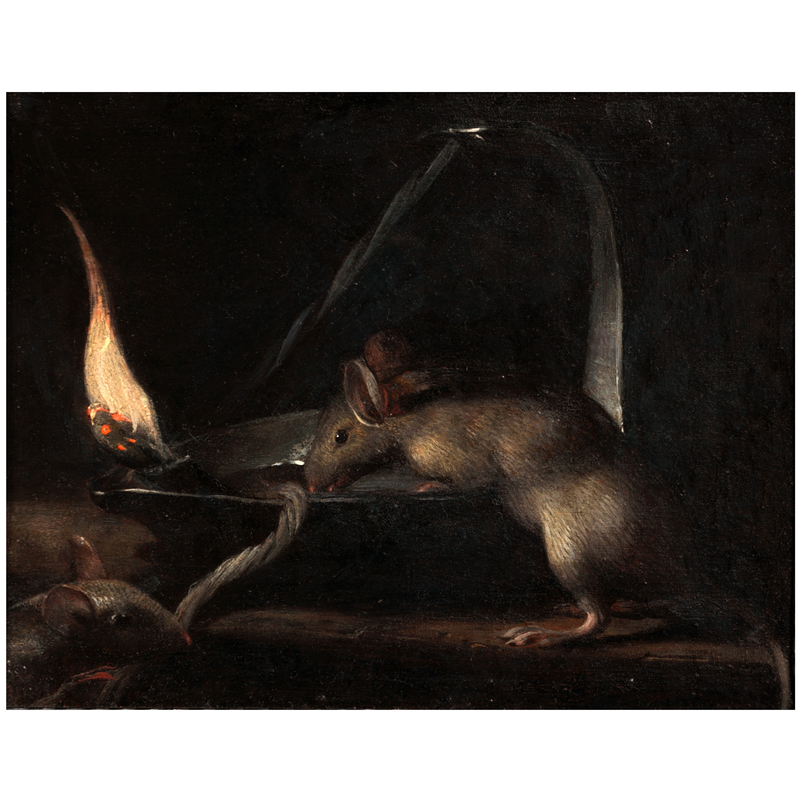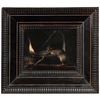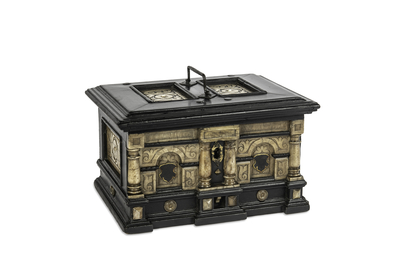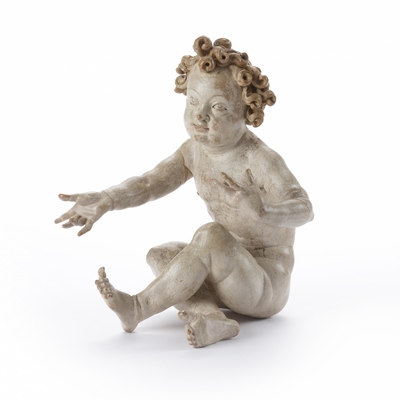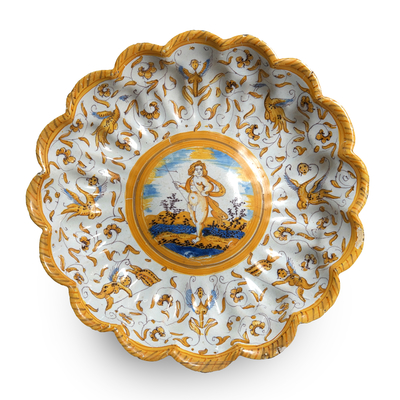Attributed to Trophime Bigot, 'Two mice nibbling on a candle wick'
Global shipping available
- Origin
- France, attributed to Trophime Bigot
- Period
- 17th century
- Material
- Oil on panel
- Height
- 12 cm
- Width
- 15.5 cm
Questions about this object?
Please use one of the contact options below:
Description
This painting, showing two mice nibbling on a candle wick, is traditionally attributed to Trophime Bigot. Central to the scene is the still-burning candle wick, which weakly illuminates the nocturnal animals. Trophime Bigot was a French painter, active from 1620 to 1634 in Rome and living from 1638 to 1642 in Aix-en-Provence. In 1644 he finally settled in Avignon. He was mainly known for his altarpieces, but in 1964 he was identified as the, until then, anonymous 'Candlelight Master' by Benedict Nicolson.
The 'Candlelight Master' painted a group of small paintings, in which candlelight played a central role. It had previously been assumed that these works could also have been painted by Gerrit van Honthorst, Matthias Stom or Georges de La Tour. Nicolson's attribution to Bigot, however, was widely accepted. Because of stylistic differences between the works from his Roman and French periods, it was suggested that there were two painters named Bigot. The hypothesis that they might be father and son was successfully refuted by documents in the municipal archives of Arles. A copper engraving based on a lost painting by Bigot of the 'Madonna and Child in Joseph's workshop' made in Aix-en-Provence, possibly links his Roman and Provençal output. At the beginning of the seventeenth century, Joachim von Sandrart already knew of a Caravaggesque painter of nocturnal busts called Trufemondi; according to Jean Boyer, the name refers to Bigot.
